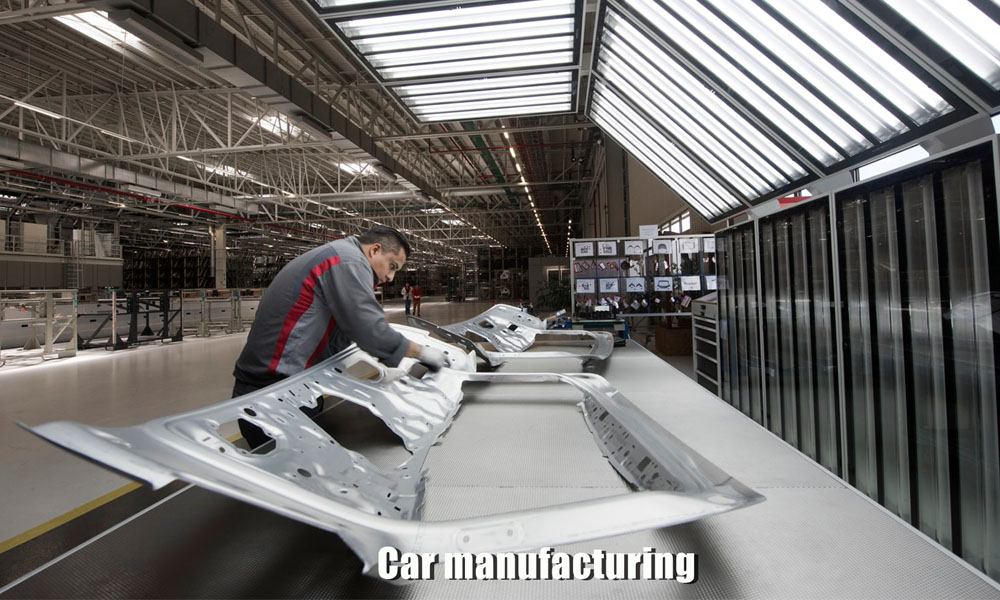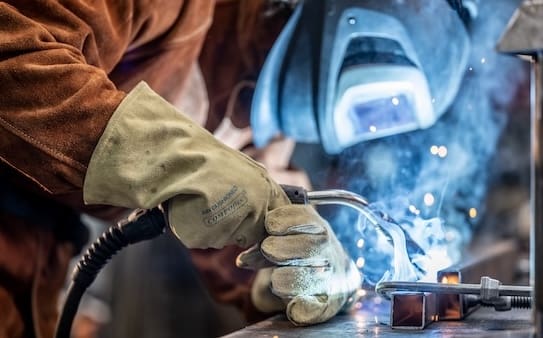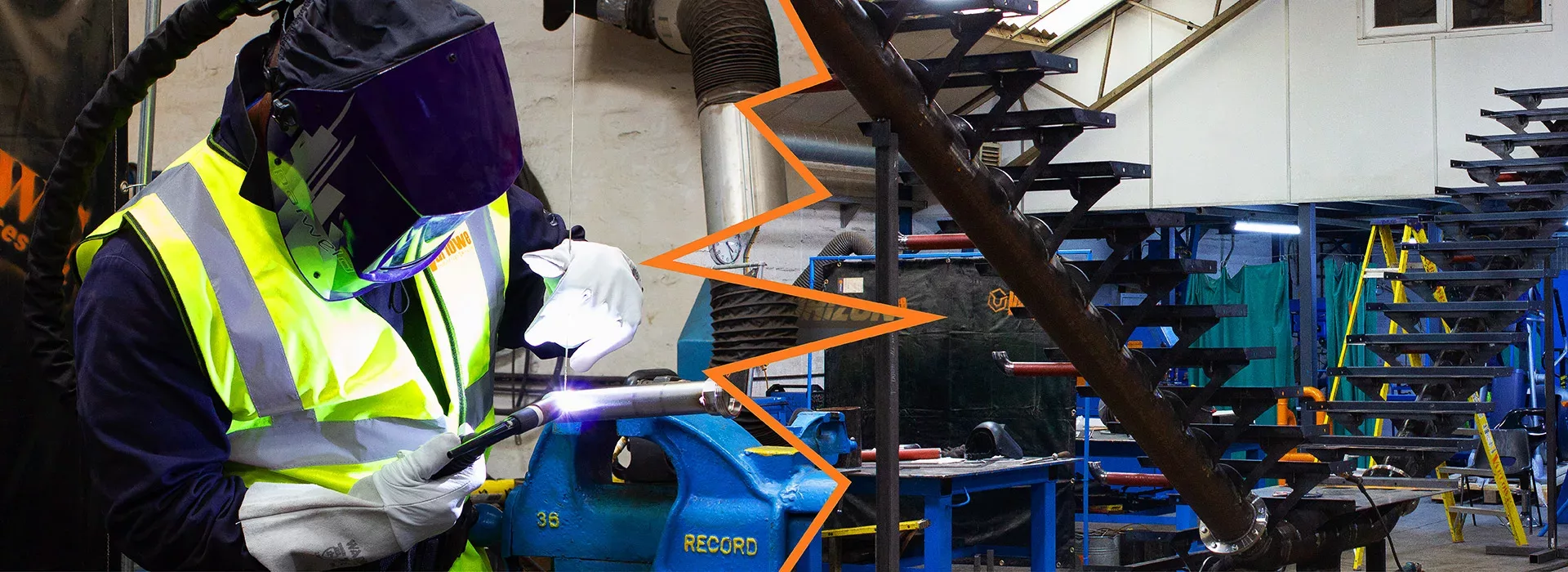Causes of weld porosity and how Belgrade Welding handles them
Wiki Article
Usual Welding Repair Service Issues and How to Address Them Successfully
Welding fixings often experience a series of problems that can threaten the stability of the end product. Common issues include insufficient penetration, porosity, and misalignment, among others. Each problem offers one-of-a-kind difficulties that require details techniques for resolution. Comprehending these problems is essential for welders intending to enhance their results and abilities. This discussion will certainly check out these common welding fixing problems and effective methods to resolve them.Poor Penetration
Inadequate infiltration occurs when the weld steel fails to completely fuse with the base product, causing weak joints and potential architectural failings. This problem usually comes from insufficient warm input, inaccurate electrode angle, or incorrect welding speed. Welders might run into insufficient penetration because of a miscalculation of the needed criteria for a certain material density or type. Additionally, contamination on the base material's surface area can prevent effective bonding, intensifying the issue. To attend to poor penetration, welders should guarantee proper settings on their equipment and preserve a clean job surface. Routine assessment of welds is recommended to recognize any shortages early, enabling for timely adjustments and the prevention of jeopardized structural honesty in welded assemblies.Porosity
Porosity is an usual flaw in bonded joints that manifests as small gas bubbles trapped within the weld metal. This issue can compromise the integrity of the weld, resulting in reduced stamina and potential failure under stress. Belgrade Fabrication. Porosity usually arises from contamination, moisture, or inappropriate welding methods, which enable gases to get away into the liquified weld swimming pool. To address porosity, welders must guarantee appropriate surface preparation, keep a tidy workplace, and make use of appropriate welding specifications. Furthermore, selecting the best filler product and shielding gas can minimize gas entrapment. Regular assessment and screening of welds can help identify porosity early, assuring timely rehabilitative activities are taken, thus preserving the top quality and integrity of the bonded structureMisalignment
Misalignment in welding can arise from different elements, consisting of improper setup and thermal expansion. Comprehending the root creates is vital for efficient resolution. A number of improvement techniques are offered to realign elements and assure architectural honesty.Reasons for Misalignment
Welding misalignment frequently stems from a range of underlying concerns that can endanger structural honesty. One main cause is inappropriate fit-up of parts before welding, which can result in voids and irregular surfaces. Variants in thermal development throughout the welding procedure can likewise cause distortion, specifically if the materials being joined have various coefficients of development. Additionally, poor clamping and fixturing might fall short to hold parts securely in place, leading to activity during welding. Poorly kept equipment, consisting of welding machines and tools, might introduce incongruities in the weld grain, further adding to misalignment. Operator error, stemming from not enough training or experience, can also play a considerable role in creating misaligned welds.
Correction Strategies Offered
Resolving imbalance effectively requires a combination of rehabilitative strategies tailored to the particular issues available. One usual technique is making use of jigs or fixtures to hold parts in the correct setting throughout welding, ensuring consistent alignment. In addition, pre-heating the materials can assist lower distortion and enhance fit-up. For considerable misalignment, mechanical realignment techniques, such as making use of hydraulic jacks or clamps, can be utilized to fix the placement before welding. Post-weld warmth treatment may also be necessary to alleviate stresses caused by imbalance. Careful assessment and adjustment during the configuration stage can avoid misalignment problems from becoming considerable issues, promoting a smoother welding procedure and boosting overall architectural honesty.Distortion
Distortion is an usual obstacle in welding that can develop from various elements, consisting of uneven home heating and cooling. Comprehending the sources of distortion is important for applying efficient avoidance strategies. Resolving this concern not only boosts structural honesty yet additionally enhances the overall top quality of the weld.Causes of Distortion
When subjected to the intense warmth of welding, products frequently undertake changes that can result in distortion. This phenomenon mostly emerges from thermal expansion and contraction during the welding procedure. As the weld location warms up, the product broadens; upon cooling, it contracts, which can create interior anxieties. Additionally, unequal home heating across a workpiece can exacerbate these tensions, resulting in bending or flexing. The kind of product additionally plays a substantial function; steels with varying thermal conductivity and coefficients of expansion might respond in a different way, causing unpredictable distortions. Additionally, inadequate joint design and inadequate fixturing can contribute to misalignment throughout welding, increasing the chance of distortion. Understanding these reasons is vital for reliable welding fixing and avoidance strategies.Avoidance Techniques
Effective avoidance techniques for distortion during welding focus on managing heat input and making sure correct joint layout. Keeping a constant warmth input assists to minimize thermal growth and contraction, which can cause distortion. Using methods such as preheating the work surface can additionally lower the temperature level slope, advertising uniform heating. Furthermore, check my blog picking proper joint layouts, such as T-joints or lap joints, can boost security and minimize stress concentrations. Applying proper fixturing to safeguard the work surfaces in area better aids in keeping positioning throughout the welding process. Finally, staggered welding sequences can distribute heat much more equally, preventing localized distortion. By using these methods, welders can greatly decrease the possibility of distortion and enhance the total high quality of their welds.Fracturing
Breaking is a typical concern experienced in welding repair work, commonly arising from different factors such as incorrect air conditioning prices, material choice, or inadequate joint prep work. The incident of cracks can substantially jeopardize the esab warrior stability of the weld, resulting in potential failures during procedure. To resolve this issue, welders must first examine the origin, ensuring that products work and appropriately chosen for the specific application. In addition, managing the cooling rate during the welding procedure is crucial; fast air conditioning can generate stress and result in breaking. Proper joint layout and preparation likewise add to decreasing the threat. Executing these approaches can improve weld top quality and longevity, inevitably decreasing the probability of splitting in finished weldments.
Insufficient Combination
A considerable problem in welding repair work is insufficient blend, which happens when the weld steel does not adequately bond with the base product or previous weld passes - Belgrade Fabrication. This problem can lead to weak points in the joint, potentially jeopardizing the integrity of the welded framework. Aspects adding to incomplete fusion consist of not enough warmth input, incorrect welding strategy, and contamination of the surfaces being signed up with. To resolve this problem efficiently, welders ought to guarantee correct pre-weld cleaning and surface prep work, as well as readjust their welding parameters to achieve adequate penetration and fusion. Normal examination throughout the welding procedure can likewise assist recognize incomplete blend early, enabling for timely restorative steps to boost the overall quality of the weldOverheating
While welding repairs can enhance structural honesty, overheating offers a significant challenge that can cause product degradation. Too much warm during welding can change the mechanical properties of steels, leading to reduced stamina, enhanced brittleness, and warping. This phenomenon is particularly important in high-stress applications where architectural dependability is paramount. Identifying overheating can include aesthetic examinations for discoloration or distortion, along with monitoring temperature throughout the welding procedure. To minimize the threats connected with overheating, welders must employ suitable methods, such as regulating warm input, changing travel rate, and utilizing ideal filler products. Additionally, implementing pre- and post-weld warm therapies can aid restore material properties and enhance the total quality of the repair work, ensuring long-term performance and safety and security.Often Asked Concerns
What Are the Typical Indicators of a Welding Issue?

Exactly How Can I Evaluate My Welds for High quality?
To evaluate welds for high quality, one can make use of visual inspections, ultrasonic screening, and radiographic techniques. Each technique guarantees architectural integrity, determines defects, and validates adherence to specified requirements, ultimately enhancing the integrity of the bonded joints.What Security Safety Measures Should I Take While Welding?
When welding, one need to prioritize safety and security by putting on suitable individual safety tools, making certain appropriate air flow, securing combustible materials away, preserving a tidy work area, and recognizing environments to stop injuries and crashes.Can I Fix a Weld Without Redesigning the Entire Joint?
Fixing a weld without renovating the entire joint is feasible, depending on the damages (Belgrade). Methods such as grinding, including filler material, or making use of a welding process can successfully deal with particular flaws while protecting the bordering frameworkWhat Devices Are Essential for Reliable Welding Fixes?
Necessary tools for reliable welding repairs include a welding machine, wire brush, mill, protective gear, clamps, and filler products. Each device plays an important duty in making certain top quality and security during the repair work procedure. Porosity usually occurs from contamination, dampness, or improper welding methods, which enable gases to leave right into the liquified weld swimming pool. Inadequately kept tools, consisting of welding machines and tools, may present incongruities in the weld bead, additional adding to imbalance. When subjected to the intense heat of welding, materials often undergo modifications that can lead to distortion. Cracking is a common problem run into in welding fixings, typically resulting from different elements such as inappropriate cooling rates, material selection, or insufficient joint prep work. A considerable concern in welding fixings is incomplete blend, which happens when the weld metal does not appropriately bond with the base material or previous weld passes.Report this wiki page